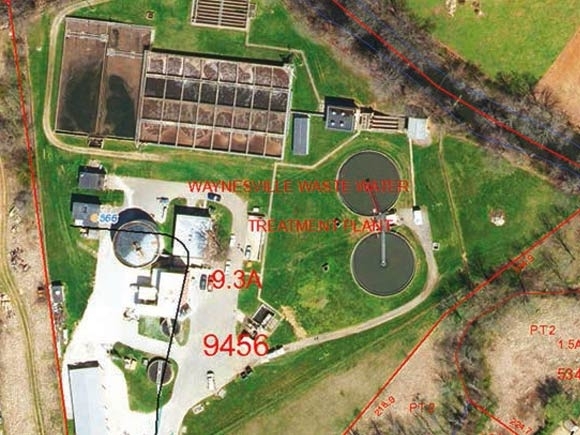Wastewater treatment plant has urgent needs, huge price tag

For the second meeting in a row, consultants presented the Waynesville Board of Aldermen with some unpleasant realities about the town’s critical infrastructure.
Waynesville’s wastewater treatment plant was built in 1965 and has an electrical system and controls that are both “outdated and deteriorated,” according to Ted Orrell, managing partner of Utility Technology Engineers-Consultants.
It was that same firm that two weeks prior suggested the town raise rates for electric customers by 12 percent to cover increasing energy costs, but this time, the needs are different and the cost is far greater.
Almost $19 million will be required to construct a new, state-of-the-art plant, Orrell told the board Oct. 24; to put that into perspective, the town’s entire yearly budget is right around $30 million.
But the improvements can’t wait — the plant handles about 3 million gallons of wastewater per day from the local sewer system, but that can sometimes swell to almost 9 million gallons, as it did during a prolonged rainstorm Oct. 23.
Many of the electrical components of the plant can no longer be replaced because they’re so outdated; town staff, Orrell said, have had to resort to ordering used parts off the internet.
Related Items
So outdated is the plant that staff sitting in the plant’s office have no way to tell if it’s even working, without physically checking each stage of the process — listening for the telltale hum of a pump, or spotting motion in the water itself.
A number of physical concerns are also present at the site, where bowed retaining walls and broken railings create a safety catastrophe just waiting to happen.
The analogy of the family car was tossed about several times during the meeting, to lend a sense of scale to the issue.
Like a car, the wastewater treatment plant is something that’s taken for granted, because it’s always there when it’s needed, but it won’t last forever and can’t be repaired continuously because old parts are harder and harder to come by. A brand new car costs $19,000 but the family income is only about $30,000, and the family has about $5,000 in savings for disasters or major, unexpected expenses.
But as with car shopping, the town does have some less cost-effective options that will keep things moving at a far lower price.
The $19 million figure Orrell quoted is for a brand new plant that uses UV light to disinfect water, rather than chlorine gas, a dangerous chemical that requires strict on-site safety measures. Continuing to use chlorine knocks a few hundred thousand dollars off the cost of constructing a brand new plant, which in either case would have a life expectancy of 50 years.
Modifying the existing plant with UV technology would cost $14 million and have a life expectancy of about 20 years, however, some equipment would still need to be replaced over that span.
Modifying the existing plant utilizing chlorine again knocks a few hundred thousand dollars off the price tag, but presents similar replacement costs over 20 years.
The bare minimums suggested by UTEC engineers amount to either a $4.6 million or $5.8 million retrofit and would extend the life of the plant by 5 to 10 years.
UTEC’s report was taken into consideration by the board, which took no action on it; figuring out how to pay for the improvements will come next, possibly in conjunction with an imminent comprehensive plan overhaul planned by the town.









